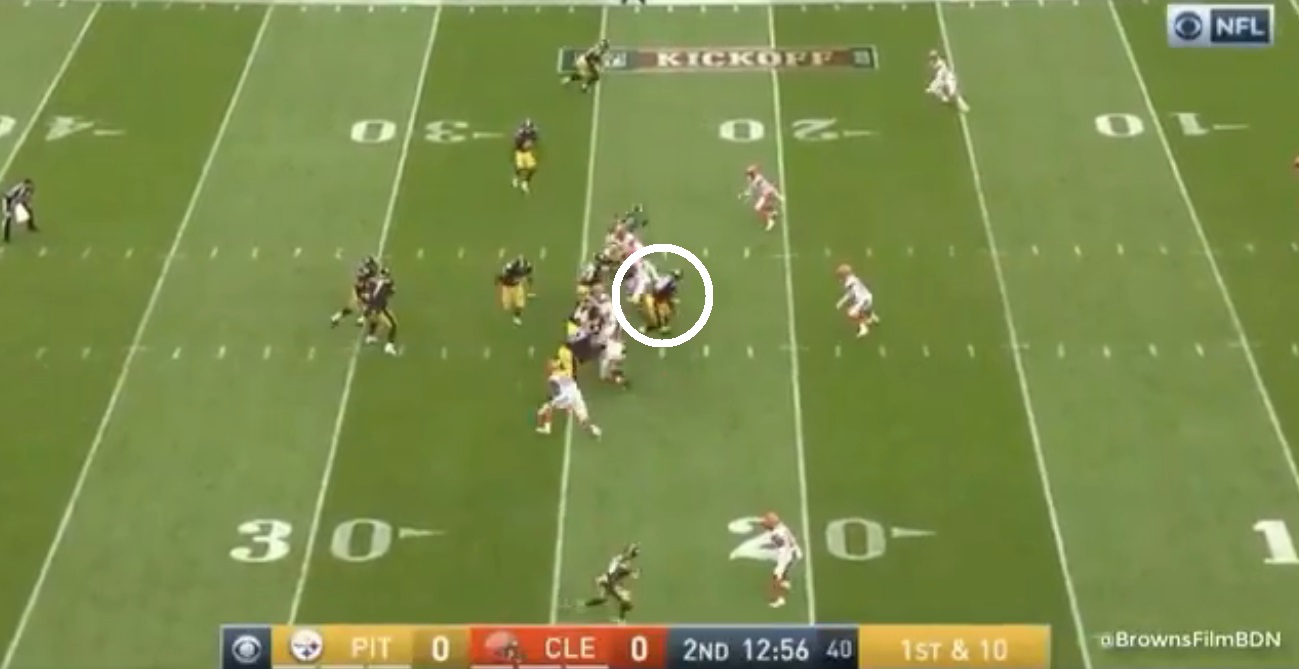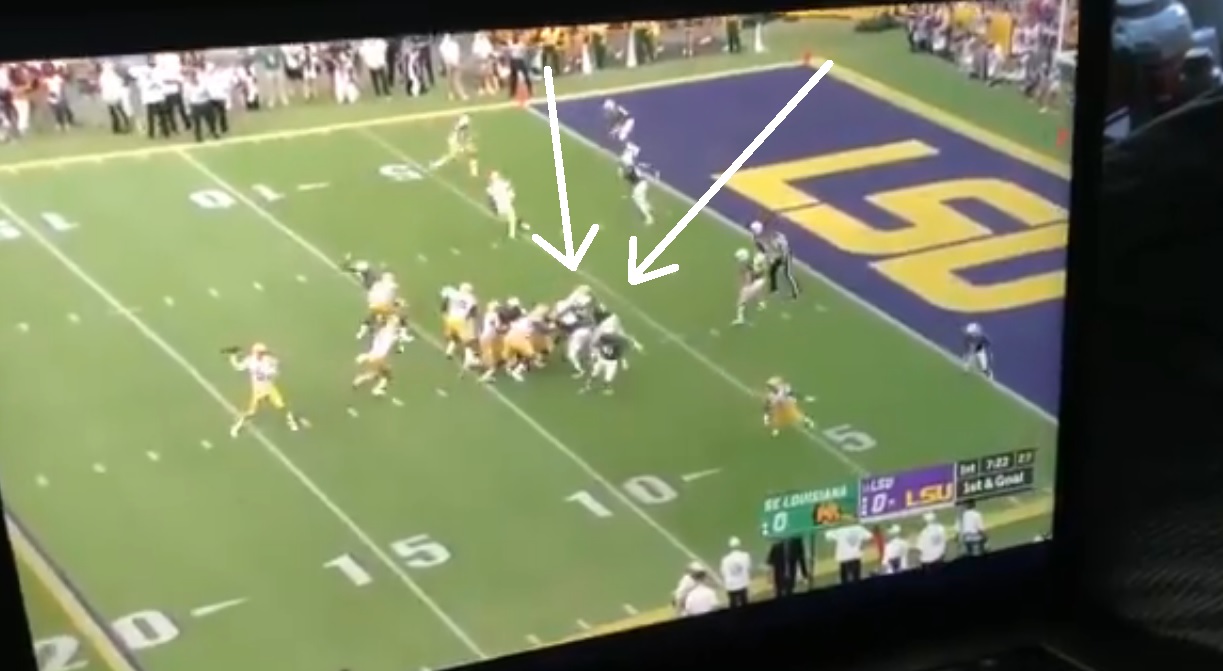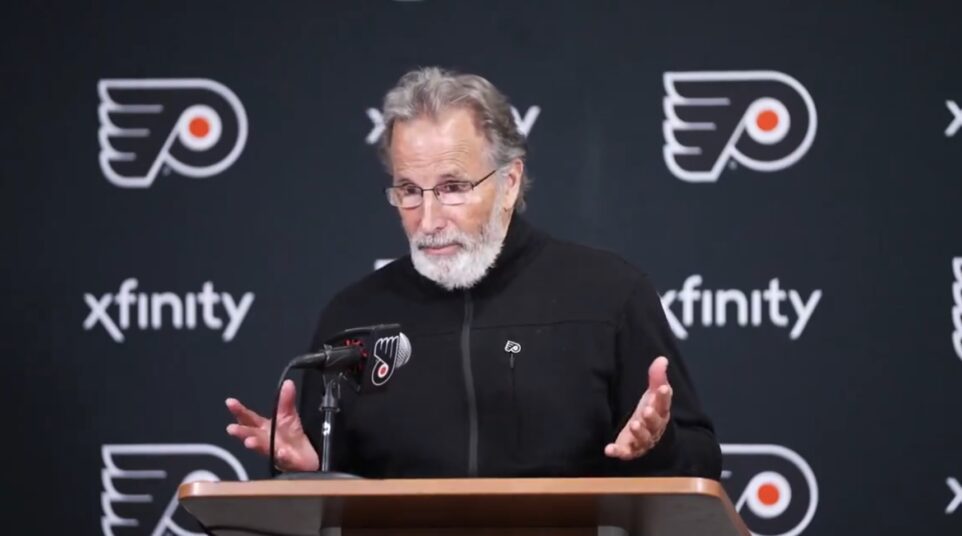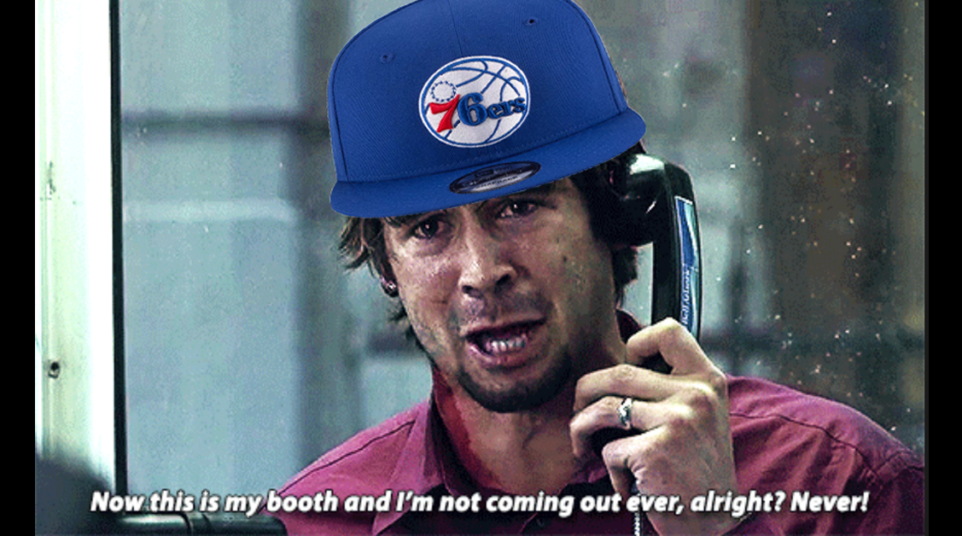
Is the Run/Pass Option the "Purest Form of Communism?"
I’m not sure, but Northwestern’s Pat Fitzgerald, one of the more underappreciated coaches in the country, seems to think so.
He’s not being totally serious; he was just making a quip during a weekly press conference in which he explained that the run/pass option is a problem because it toes the line between what’s legal and illegal in terms of downfield blocking.
Here’s the video clip:
"RPO is the purest form of communism."
You can't watch football without hearing "RPO" these days, and @coachfitz51 has some strong thoughts on the Run-Pass Option: pic.twitter.com/isVYvkPCvr
— Big Ten Network (@BigTenNetwork) September 11, 2018
The question was asked by a former player. I don’t know who he is, but here’s Fitzgerald’s full quote:
“Yeah, it’s communism. RPO is the purest form of communism. I mean, I don’t understand how offensive linemen can be downfield. It used to be, when you and I played, when you tripped and fell down, it was an illegal man down field. Now if you’re just an uncovered lineman and you go 2.3 yards, it’s not a penalty. But if you go three, it is, and nobody can see it until after the ball is thrown. Again, it’s the rules. You can complain all you want. If I want to get it fixed, I guess I can beg to be on the rules committee. But it’s the most en vogue change, I think, in football, that if you’re a purist of football, it’s not the game. It’s not. People down field blocking, and the ball being thrown, should be illegal. But, as a defensive coach with defense in my background, we will absolutely, 100% take full advantage, within the framework of the rules that are given to us. So RPO forever.”
Fitzgerald really isn’t wrong, there are a lot of funky blocking schemes that are borderline rule breakers when teams use these sets. In college ball, the rule is that ineligible receivers can only be a maximum of three yards beyond the line of scrimmage before a pass is thrown.
In the NFL, this limit is only one yard, so ineligible professional linemen really need to block laterally or stay at home until the RPO is executed.
Does that make sense? I’ll try to explain.
In the two clips below, you’ll see the Eagles first drop the offensive line into a pass blocking scheme (which suggests that the play might be simple play-action and not even an RPO). Then, in the second play, you’ll see Jason Kelce pull as the left side of the line essentially goes into run-block mode while the right side goes into pass-block mode:
In both cases, there’s no issue there, since there isn’t any ineligible stuff going on down the field. The entire group is at or near the line of scrimmage when the ball is released, and on that second play, you can see Big V and Stefen Wisniewski moving laterally while Kelce pulls. That’s why a lot of NFL RPOs are built on outside zone or sweep plays, because you can’t schematically block for an inside running play while staying within the one yard limit and still providing for a passing option.
It’s a little different on a college play like this, where LSU quarterback Joe Burrow pulls the ball out and throws a short sideline pass:
This is an RPO, not a super creative, post-snap one, but an RPO is an RPO. Basic power type run on the inside, but Burrow has the option to throw the sideline out to Chase if the corner is playing off enough. I like seeing this in the offense pic.twitter.com/dcRKE0NYJ9
— 1.68 (@chip641) September 11, 2018
Fitzgerald is griping about this kind of thing, where the blockers are almost three to five yards down the field while the quarterback is actually throwing the ball instead.
Here you’ve got one lineman who is dangerously close to being ineligible, almost four yards deep on release:
Similarly, the Steelers ran an RPO play last week where they slipped center Maurkice Pouncey five yards down the field.
The difference here is that he engages with with the middle linebacker, which is a quirk in the NFL guidelines:
Steelers go with a bubble/pop RPO and Boddy-Calhoun gets caught in 'no man's land'. Surprised Pittsburgh didn't go to it a bit more in zone situations. #BrownsFilmBDN pic.twitter.com/3CvRwgMEkF
— OBR Film Breakdown (@TheOBRFilmBDN) September 10, 2018
From the rulebook:
Item 1. Legally Downfield. An ineligible player is not illegally downfield if, after initiating contact with an opponent within one yard of the line of scrimmage during his initial charge:
(a) he moves more than one yard beyond the line while legally blocking or being blocked by an opponent
- (b) after breaking legal contact with an opponent more than one yard beyond the line of scrimmage, he remains stationary until a forward pass is thrown
- (c) after losing legal contact with an opponent more than one yard beyond the line of scrimmage, he is forced behind the line of scrimmage by an opponent, at which time he is again subject to normal blocking restrictions for an ineligible offensive player.
So if Pouncey was out there by himself when Roethlisberger throws that ball, it’s a flag. Instead, he locks up the linebacker, which negates the penalty.
HOWEVER –
In this specific case, Pouncey doesn’t make contact with a defender as he comes off the line, so he’s in violation of guideline A per item 2:
Item 2. Illegally Downfield. An ineligible offensive player is illegally downfield if:
A) he moves more than one yard beyond the line of scrimmage without contacting an opponent
B) after losing contact with an opponent within one yard of the line of scrimmage, he advances more than one yard beyond the line of scrimmage
C) after losing contact with an opponent more than one yard beyond the line of scrimmage, he continues to move toward his opponent’s goal line.
Here he is coming off the line without touching anybody:
For comparison, here’s the NCAA rule:
Ineligible Receiver Downfield
ARTICLE 10. No originally ineligible receiver shall be or have been more than three yards beyond the neutral zone until a passer throws a legal forward pass that crosses the neutral zone. A player is in violation of this rule if any part of his body is beyond the three-yard limit
You see why all of this can be very confusing, yeah?
One of the issues with the RPO is that it makes it difficult for officials to focus on two different sets of infractions. If five linemen drop into pass protection, you look for holding, hands to the face, roughing the passer, and stuff like that. If the QB goes RPO and pulls out on a handoff, you’re still looking for those things while not really paying attention to the guys who are trying to blur the lines and deceive via run blocking, which I showed you in the LSU and Steelers clips.
So Fitzgerald has a point. The NCAA could solve the problem by adopting the NFL’s one-yard rule.
It’s communism.






